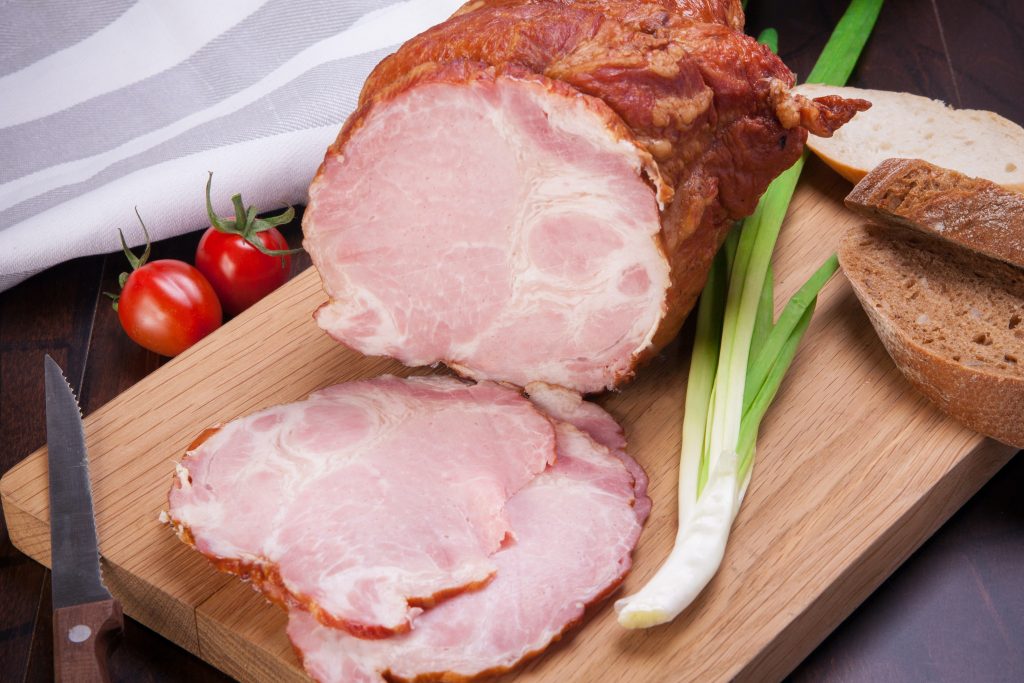Several months ago, I said that I was planning to share the source of nitrates which form into nitrites in cured meats, and that one of the sources was bird poop. When I went back to my research online, I couldn’t find the articles! Now with having a little extra time, I have researched this topic more than I would like to admit, yet still feel very unequipped to share this information. I will do my best in educating you about the source of cures in meats, so that you can make an educated decision about whether you want to eat them or not. Understanding how food is produced and preserved has helped me to let go of the fears that I once had, and I want to share my journey with you.
When Cory and I started raising pastured pigs, I had heard that cured meats were unhealthy, but for some reason, I believed that without the cure in bacon and ham, you would risk harmful bacteria growing in your meat. I had done a lot of research, and this was all I could find, so I shared it with my customers every time they had one of our hogs processed. Then I started learning more about the history of curing, and I realized that people had been curing meat without nitrites for years before the discovery of saltpeter.
In order to grasp what cures are and why we do them, I want you to go back in time with me. Before the time of refrigerators and freezers, meat only had a short time before it went bad. People would often eat it right away or use natural preservation methods like freezing it in their attics, packing it in fat, or using salt to name a few. It certainly wouldn’t keep forever though. At some point in our history, (there is some debate on this) somebody discovered saltpeter and found that it caused a good flavor and color to the meat and helped to preserve the meat longer.
A whole industry was formed and a lot of money was made with this new preservative. At the time, nobody really understood how saltpeter was formed, but they knew where to mine it. According to earthwormexpress.com, it was said that saltpeter occurred wherever urine and dung (poop) occurred in bat caves. German farmers were able to produce their own saltpeter which was “managed heaps of vegetable matter mixed with excrete and dung created by farmers from which niter rich material was removed and saltpeter extracted.”
Today chemists produce saltpeter on an industrial scale in a lab using a variety of methods in order to cure meats. According to Thought.Co
“Most potassium nitrate (saltpeter) is produced using a chemical reaction of nitric acid and potassium salts. In the lab, it’s easy to make potassium nitrate by reacting a mixture of ammonium nitrate and potassium chloride in water. Bat guano was an important historical natural source. Potassium nitrate was isolated from guano by soaking it in water, filtering it, and harvesting the pure crystals that grow. It may be produced in a similar manner from urine or manure.”
Understanding the source of nitrates/nitrites in cured meats and observing the research that suggests that they increase our risk for cancer, (there is debate about whether this study was done well) we have decided to avoid them completely. We started doing some experimenting on our farm, and our family discovered that old-fashioned curing, with unprocessed salt and maple syrup, made really good hams and bacon. We have also used celery juice powder in order to get a pink color and ham texture, but it’s certainly not necessary if you want to avoid the nitrites completely.
Some sources suggest that without the nitrites, harmful bacteria might grow in the meat. This is something I encourage you to research yourself, but I believe that this risk is only if you are curing at room temperature. We do all of our curing in the refrigerator, (no longer than 5 days) so what we are doing is no more risky than marinating meat in the refrigerator. It’s also interesting to note that several older books say that these preservatives are only necessary in the industrial system. This would have been during a time when people did not have refrigerators yet. If you want to try natural curing, you can ask your butcher not to cure your pork. Instead you can ask for pork bellies (uncut) to make your own naturally cured bacon. The hams can be used as roasts or naturally cured at home. At this time, I don’t know of any butchers that will use natural cures.
Understanding the source of cures and how they originated helped me to have peace about avoiding them completely. My own personal conviction is that cured meat is not natural, nor is it necessary in our modern world.
Have you tried curing meats? We love to hear from you!


Interesting reading your article on nitrates
Made me think about when I was a kid and Grandpa Gerald butchered his pigs and had a little shed that he cured hisbaconand hams. Wished I’d paid more attention what was going on.
I remember loving the bacon and ham I found that little building interesting.and can remember the smokey smell in it.
Grandpa Gerald could do it all
I wish I would have asked more questions!! Thanks for sharing Linda!
I wish I would have asked more questions!! Thanks for sharing Linda!